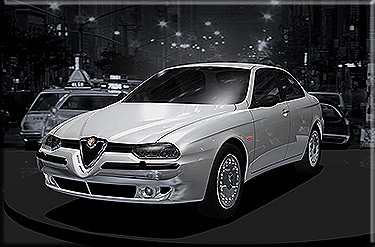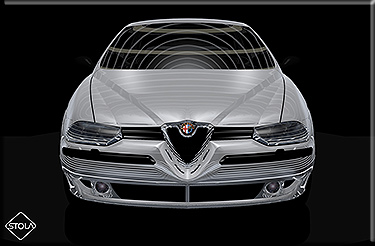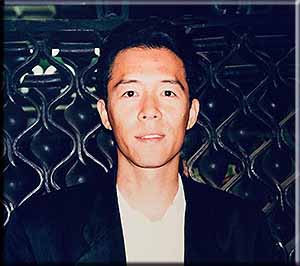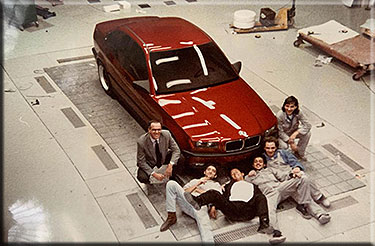OCTOBER 1994
 February 1994 the first drawing of the Tipo 932 made by Walter De Silva.
February 1994 the first drawing of the Tipo 932 made by Walter De Silva.
n October 1994, Stola s.p.a worked at the Alfa Romeo Style Center in Arese to support their stylists, directed by Walter De Silva.
The goal of Alfa Romeo designers Maurer Sbignew, Wolfgang Egger, Antonio Rosti, and Vincenzo Ferreri, was to create the first exterior and interior styling models for a car inspired by the historic 1954 Giulietta. A suggestive image of the definitive class C mathematics created by the Alfa Romeo Style Center in AreseThe task for the Stola technicians of the Lombardia headquarters at Cinisello Balsamo was to provide in parallel the macro feasibility and class C surfaces necessary for the milling of the two models.
A suggestive image of the definitive class C mathematics created by the Alfa Romeo Style Center in AreseThe task for the Stola technicians of the Lombardia headquarters at Cinisello Balsamo was to provide in parallel the macro feasibility and class C surfaces necessary for the milling of the two models.
Messrs. Rabaioli, Morlacchi, Castiglioni and Di Benedetto, together with other designers and mathematicians, would reside in Arese for over two months working side by side with the Alfa Romeo team.
The project was the Type 932, known as Giulietta by all involved.
Following the approval of the first two styling models, both milled in Arese, the necessary model definition and refinement work then moved to the Stola model shop in Rivoli.
First, a see-through exterior style model was created with the necessary modifications which was then followed by the interior.
At the beginning of February 1995, Walter De Silva unexpectedly requested Stefano Ardagna’s modelling team to heavily modify the body side just a few days before the presentation to the CEO of Fiat Auto, Paolo Cantarella.
From his intuition, the distinctive character of the type 932 was born; the side shoulder would no longer be continuous but only present on the front and rear wings with a total interruption on the two doors.
The presentation to Fiat top management was an extraordinary success and lead to the immediate decision to start all work with the aim of having a “start of production” no later than 1997.
 Type 932 clearance and tolerance diagram
Type 932 clearance and tolerance diagram
 Summary table of the Stola design.Given the design experience gained in previous years with the Lancia Kappa, the Ferrari 550 Maranello and the new Alfa Romeo 166, which was work was in progress at the time, the Fiat managers decided to entrust the entire project to the Stola family company and their engineering department headed by Gottardo Bustreo since 1991.
Summary table of the Stola design.Given the design experience gained in previous years with the Lancia Kappa, the Ferrari 550 Maranello and the new Alfa Romeo 166, which was work was in progress at the time, the Fiat managers decided to entrust the entire project to the Stola family company and their engineering department headed by Gottardo Bustreo since 1991.
He was also personally commissioned by Roberto Stola to carry out the project management activities, immediately sensing its strategic importance for the company; an unusual dual function, which would prove immediately effective.
Bustreo took advantage of the work of the managers of the technical offices Carlo Mantovani for class A mathematics, Carlo Besana for the design of body and mobile parts and Da Re.
For Stola,Tipo 932 represents a real turning point, given the importance that Fiat Auto attached to this sedan segment.
At the beginning of 1995, following the scan of the definitive exterior and interior styling models, the Stola surfacing department began the class A mathematics supported by their feasibility colleagues and Alfa Romeo stylists.
The final objective of the work was the construction of two mathematical verification master models for the validation of all surfaces.
Gottardo Bustreo liaised with Alfa Romeo's Project Manager Renato Pasquali for almost three years.



 The studies for class A mathematics carried out by Team Stola under the supervision of the
The studies for class A mathematics carried out by Team Stola under the supervision of the
designers of the Alfa Romeo Style Center in Arese.
 Official photo of the Alfa Romeo 156.
Official photo of the Alfa Romeo 156.
The definitive name of the Type 932 would be Alfa Romeo 156, with the official presentation taking place in September 1997 at the Frankfurt motor show.
It became a truly extraordinary success, to the point that in the first 4 months following the presentation it went onto collect over 90,000 orders.
At the end of 1997 this sedan went on to win the most prestigious of the specialized press awards: Car of the Year 1998.
Stola s.p.a. were also be involved on this model for the Gazzella dei Carabinieri and Pantera della Polizia versions, both full of modifications for their specific uses.


January 1998, the versions of the 156 Carabinieri and Polizia have different design variations compared to the normal production ones, all made in Stola s.p.a.
 September1997. Official presentation of the 156 at the Frankfurt Motor Show.All 156’s were produced at the Alfa Romeo factory in Pomigliano d'Arco, becoming one of the biscione brand’s greatest sales successes in history.
September1997. Official presentation of the 156 at the Frankfurt Motor Show.All 156’s were produced at the Alfa Romeo factory in Pomigliano d'Arco, becoming one of the biscione brand’s greatest sales successes in history.
Around 680,000 units of all versions went on to be produced.
In terms of style, it is certainly the masterpiece project of Walter De Silva in his time at the Alfa Romeo Style Center, and perhaps of his whole career ...




















